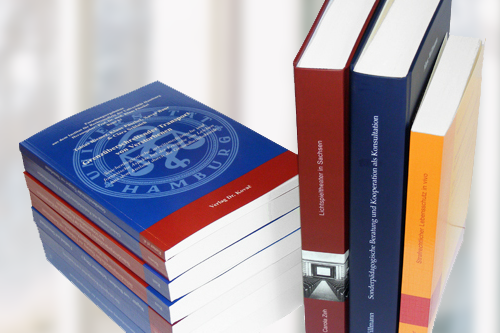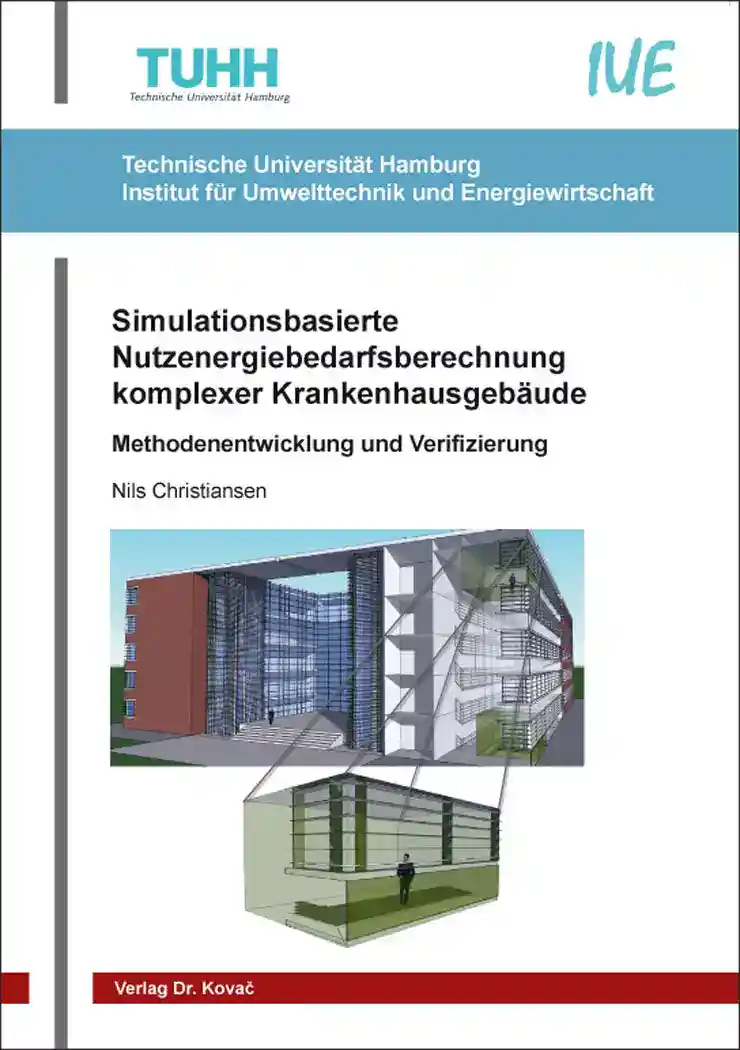Nils ChristiansenSimulationsbasierte Nutzenergiebedarfsberechnung komplexer Krankenhausgebäude
Methodenentwicklung und Verifizierung
Schriftenreihe technische Forschungsergebnisse, volume 30
Hamburg 2018, 252 pages
ISBN 978-3-8300-9918-5 (print) |ISBN 978-3-339-09918-1 (eBook)
About this book deutschenglish
The goal of reaching a virtually climate-neutral building stock by the year 2050, set by the German Federal Government, requires extensive measures to promote (1) the increased use of renewable energies and (2) the more efficient use of energy in buildings. Depending on the method of calculation, their share of total final energy consumption in Germany is currently around one third, while about two-thirds of this amount is for residential and one third for non-residential buildings.
Hospitals are among the most energy-intensive non-residential buildings due to the stringent requirements for room conditioning and a large number of medical devices. Partly due to increased cost pressure in the healthcare sector, efforts to reduce energy consumption have intensified significantly in the past 10 to 15 years. So far, however, the energetically relevant processes in hospitals have been investigated insufficiently.
For the purpose of increasing energy efficiency while taking into account economic efficiency, a deeper understanding of the energy flows in hospital buildings is necessary. In order to create detailed analyses of the energy consumption and thereby show efficiency potentials, i. a. computer simulations are a viable option. However, they are often too complex in terms of their operability in business practice and are consequently rarely used.
In this work, therefore, a procedure is developed with which the energetically relevant processes in hospital buildings can be examined in detail and efficiency measures can be evaluated. As an implementation of this new procedure, the simulation software "HospiTool" was created. It enables detailed building energy calculations with simplified operation, low data collection effort, and low hardware and software requirements.
The model-based verification of the tool shows that the achieved results for different types of buildings are comparable with established calculation methods. In the practical verification, using the example of a modern laboratory building at the University Medical Center Hamburg-Eppendorf, high efficiency potentials are demonstrated, in particular by plant/technical equpiment related measures as well as operational modifications. The necessary calibration of the simulation model with the measured consumption values is possible in just a few steps and delivers high levels of congruence, especially for heat and electricity.
Keywords
EnergienutzungEnergiesimulationEnergiesystemeEnergieverbrauchGebäudeenergieGebäudesimulationGrünes KrankenhausKrankenhausKrankenhausgebäudeMedizintechnikNutzenergiebedarfsberechnungSimulationsentwicklungIhr Werk im Verlag Dr. Kovač

Möchten Sie Ihre wissenschaftliche Arbeit publizieren? Erfahren Sie mehr über unsere günstigen Konditionen und unseren Service für Autorinnen und Autoren.
